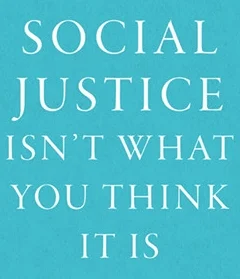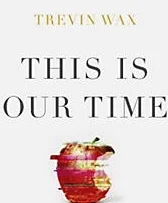Ten Significant Books from 2019
As a reading year, this year was somewhat slower than many other years because I was editing a book for publication. That required me to spend a lot of time staring at sentences, looking up words, checking quotations, and reading them in context. As a result, my tally of recent books was somewhat lower.
Of course, as I learned from Alan Jacobs in The Pleasures of Reading in an Age of Distraction, the point in reading is not maximum consumption. However, as a serial reviewer of books, my lower productivity was, at times, weird, even when it did not rise to the level of distressing.
From among the books that I read that were published in the past year or so, here is a list of ten that I found especially helpful. The list is in no particular order.
Reformed Ethics, vol. 1, by Herman Bavinck.
The first volume of Herman Bavinck’s Reformed Ethics provides an example of an ethical system with its roots in an unchanging greatest good. Although the contents of the volume are more than a century old, they appear to have aged very little; indeed, this initial volume of Bavinck’s ethics is remarkably fresh and invigorating. This is because, for Bavinck, ethics is about loving God by living rightly through the power of the Holy Spirit. More than that, the center of Christian ethics is the character of God. As such, Bavinck’s ethics are explicitly theological in the deepest meaning of the term. That is, right living must begin by understanding who God is.
Your Future Self Will Thank You, Drew Dyck.
The basic formula laid out in Your Future Self Will Thank You is that we need to incrementally build new habits. Dyck sifts through research that shows that the problem with most of our self-improvement attempts is that we try to change too much too quickly and without the appropriate incentive structures. Dyck uses recent scientific research to show that will power is a finite resource. It can be developed over time. However, our self-control is subject to fatigue. When we are tired, stressed, or distracted we are much more likely to fail in our attempts at self-control. Not coincidentally, this happens to match what Scripture teaches. This is why Sabbath is built into the pattern of Scripture. This is why Proverbs focuses so much on patterns of life.
Scientism and Secularism, J. P. Moreland
In popular culture, scientism has overtaken other religious systems as a dominant plausibility structure. In other words, it is how many people make sense of the world around them. Not only does this often displace belief in God, but it undermines the ability of those who hold to scientism to accurately evaluate competing, non-scientistic perspectives that might provide better access to truth.
Scientism has influenced several of the shifts our culture has witnessed in recent decades. The first is that it has taught people that science sums up the totality of accessible knowledge, while religion is blind faith divorced from reality. This myth may help people coexist, but it does much less to encourage the pursuit of truths that cannot be known empirically, much less fairly evaluate those that haven’t adopted the current orthodoxy of scientism.
Transhumanism and the Image of God, Jacob Shatzer.
Our smartphones are changing the way that we focus, constantly dragging our attention away from more significant things to the trivial. Social media is functionally altering the way that we socialize with one another. We tend to focus on documentable events rather than companionable experiences. The internet and the availability of search engines are modifying how we value knowledge of facts.
In his recent book, Transhumanism and the Image of God, Jacob Shatzer shows that transhumanism is with us now and, to some degree, inescapable. At the same time, it is our responsibility as Christians to begin to ask questions about to what degree we can accept the changes demanded by technology and to what degree we ought to resist them.
Between Life and Death, Kathryn Butler
Kathryn Butler’s book, Between Life and Death: A Gospel-Centered Guide to End-Of-Life Medical Care, is an extremely helpful volume in learning about various critical medical treatments, which can help make the cost/benefit analysis for choosing to continue with interventions. She also carefully sorts through the biblical data to consider whether an ethic of life, which is demanded by Scripture, entails pursuing every medical treatment possible no matter the cost, the low likelihood of success, or the trauma to the patient. Butler, a trauma and critical-care surgeon, has worked at several significant medical facilities and brings her experience and expertise to bear in a compassionate manner in this book.
Radical Help, Hilary Cottam
In her recent book, Radical Help, Hilary Cottam challenges the expansion of centrally planned model of government poverty alleviation. Writing from progressive perspective, Cottam makes an argument that will sound familiar and welcome to conservative ears: The most effective means of poverty alleviation is the development of community.
Determined to do something practical about the problem of poverty, Cottam set to work redesigning portions of the welfare system in the United Kingdom. She challenged the status quo by asking a profound question of workers within a number of social programs: Who has been helped by your social program so that they are no longer enmeshed in the welfare system?
The Power of Christian Contentment, Andrew M. Davis
One of the central elements of The Power of Christian Contentment is that our satisfaction in Christ is a primary tool for evangelism. Everyone is unhappy about something. Our political climate is entirely structured on creating unhappiness that only abolishing the other party can possibly fix. Economically, no matter how much we have, one side reminds us that someone else has more (which is unfair, they say) and the other side reminds us that some people are keeping us from getting more (also inherently unjust, in the eyes of some). Davis’s argument is that when we have Christ, we have everything we need. When we are satisfied in Christ’s provision, that shows and that satisfaction is attractive to the harried masses around us who are convinced that fewer social restrictions or a larger bank balance are the keys to eternal satisfaction.
Becoming Whole, Brian Fikkert and Kelly M. Kapic
Becoming Whole is an excellent tool to get people inside the local church to rethink poverty alleviation and, en route to that reconsideration, to think about the value structures in their own lives. I have read dozens of books on poverty and the American dream in my studies of wealth and poverty, environmental ethics, and the like. I did not want to put this book down. Each page offered new ways of explaining Christian theology in a way that is relevant to people in a dominant culture that is both gnostic and excessively materialistic.
This is volume that, along with When Helping Hearts and Practicing the King’s Economy, ministry leaders should read as they seek to form people and outline a vision for human flourishing among their own congregants and in the world around them.
The Gospel of Our King, Bruce Ashford and Heath Thomas
The Gospel of Our King affirms the reality that we were not made for ourselves, but to serve the King of the Universe.
I have read dozens of books on worldview, the gospel, and mission. I found The Gospel of Our King to be a refreshing presentation of this topic. This is a book that I am glad to recommend. Above all, this is a volume that helped to remind me of the central purpose of the Christian life: To glorify God and enjoy Him forever
God and Galileo, David Block and Kenneth Freeman.
It’s hard to characterize this book simply, to put it into a clear category. Usually that is a criticism, but in the case of God and Galileo it is because the book does a great deal well. Are you seeking a resource to disrupt a materialist’s view that faith and science are mutually exclusive? This book can help do that. Are you interested in the contours of the faith and science debate as a Christian? This book will inform you. Are you looking for an enjoyable read for a quiet evening? This book offers it. Are you longing for a volume that encourages you to enjoy God through both his special and general revelation? This book calls you into a sense of wonder at both.
And, as a bonus, because I found this book so paradigm shaping. I am linking to my review of a book that is a a couple of decades old, but likely belongs in the camp of classics.
Not the Way It’s Supposed to Be, Cornelius Plantinga
The tragedy of much contemporary and theologically orthodox Christianity, particular among evangelical Protestants, is that a faulty definition of sin has led to thin ethics. Sin is sometimes popularly perceived of as something that is paid for by the cross and then entirely behind the Christian. To a degree this is true, Christ’s substitutionary death on the cross provided a path for the elect to be redeemed. Forgiveness for sin is now available for those that repent and put their faith in Christ’s death, burial, and resurrection as the hope for eternal life. All of this is true, but it neglects some of the ongoing effects of sin in even the lives of Christians and especially in the world around us.
Cornelius Plantinga’s book, Not the Way It’s Supposed to Be: A Breviary of Sin, is an important book for understanding the nature and effects of sin. The book was originally published in 1995, and won multiple awards. It is both excellently written and exceedingly positive. This is the sort of book that should remain in print because of its enduring value as an accessible and theologically precise systematization of the doctrine of sin.



























There’s no reason to doubt that Jesus was nailed to the cross. Ultimately, I trust what Scripture says about Jesus’s crucifixion because I also trust what it says about his resurrection. And that’s what we should be celebrating this week.